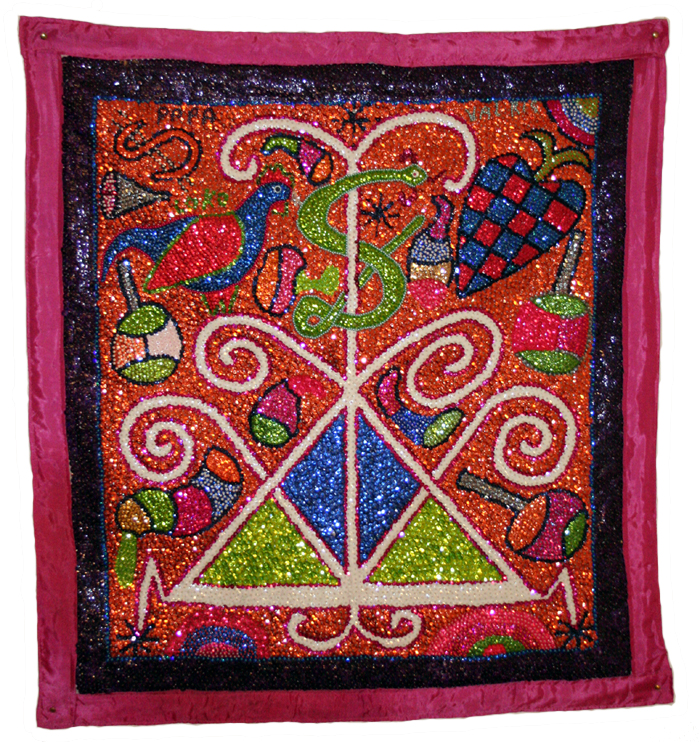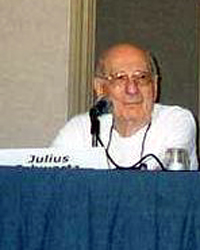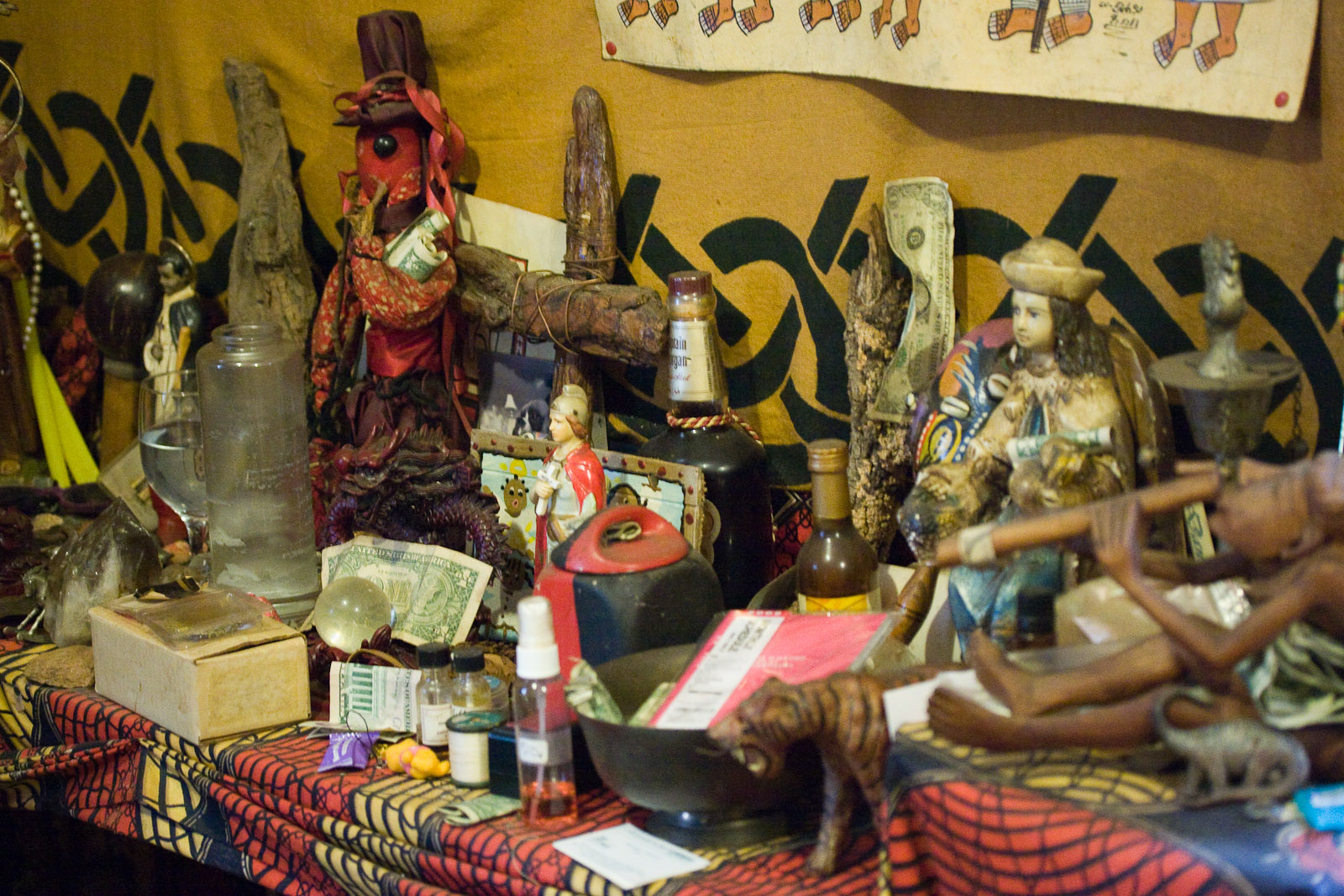|
Drums (comics)
''Drums'' is a 2011 supernatural comic book Limited series (comics), limited series created by writer El Torres and artists Abe Hernando and Kwaichang Kraneo. ''Drums'' follows FBI special agent Martin Irons as sinister forces work against him while he investigates the mass homicide of practitioners at a Haitian Vodou#Reception, Voodoo ceremony in Florida. Synopsis The series follows FBI agent Martin Irons, who is tasked with investigating the deaths of a large group of people during a Santeria ceremonial ritual in Florida. When one of the seemingly dead victims rises as a Zombie comics, zombie, Irons must find out what exactly is going on and why. Development For the series, Torres brought in elements of several Afrocaribbean religions, mainly Santería, Cuban Santería, Candomblé, Brazilian Candomblé, Haitian Vodou, and New Orleans Voodoo. Torres admitted that they took liberties with the representations of these religions for "dramatic purposes" and that brought in other Afro- ... [...More Info...] [...Related Items...] OR: [Wikipedia] [Google] [Baidu] |
Trade Paperback (comics)
In comics in the United States, a trade paperback (shortened: TPB or trade) is a collection of stories originally published in comic books, reprinted in book format, usually presenting either a complete miniseries, a story arc from a single title, or a series of stories with an arc or common theme. A trade paperback may reproduce the stories either at the same size in which they were originally presented (in comic book format), in a smaller "digest-sized" format, or a larger-than-original hardcover. This article applies to both paperback and hardcover collections. In the comics industry, the term "trade paperback market" may refer to the market for any collection, regardless of its actual cover. A trade paperback differs from a graphic novel in that a graphic novel is usually original material. It is also different from the publishing term '' trade paperback'', which is a book with a flexible cardstock cover that is larger than the standard mass market paperback format. Histor ... [...More Info...] [...Related Items...] OR: [Wikipedia] [Google] [Baidu] |
Haitian Vodou
Haitian Vodou is an African diasporic religion that developed in Haiti between the 16th and 19th centuries. It arose through a process of syncretism between several traditional religions of West and Central Africa and Roman Catholicism. There is no central authority in control of the religion and much diversity exists among practitioners, who are known as Vodouists, Vodouisants, or Serviteurs. Vodou revolves around spirits known as '' lwa.'' Typically deriving their names and attributes from traditional West and Central African divinities, they are equated with Roman Catholic saints. The lwa divide up into different groups, the ''nanchon'' ("nations"), most notably the Rada and the Petwo. Various myths and stories are told about these lwa, which are regarded as subservient to a transcendent creator deity, Bondye. This theology has been labelled both monotheistic and polytheistic. An initiatory tradition, Vodouists usually meet to venerate the lwa in an ''ounfò'' (temple), run ... [...More Info...] [...Related Items...] OR: [Wikipedia] [Google] [Baidu] |
Amigo Comics
Amigo Comics is a Spanish company which publishes creator-owned comic books. However, despite being a Spanish company, its titles are solely published in the United States through Behemoth Comics. Titles are also licensed out to other foreign publishers via foreign licensing agreements. In 2019, the company received its first Eisner nomination through the Best Archival Collection/Project—Strips category for their title '' Sky Masters of the Space Force: The Complete Sunday Strips in Color''. In March 2020, the company agreed to an imprint deal with Behemoth that would see all future releases published through Behemoth in the US. Titles Comic books published by Amigo in the format of ongoing or limited series are: *''Alan Dracon'', #1–4 (2016–2017) *''Apocalypse Girl'' **v1, #1–4 (2017–2018) **v2, #1–4 (2019–2020) *''Arkane Secrets'', #1–3 (2013–2014) *''Barbara the Barbarian'', #1–3 (2020) *'' Beast No More'' - Metamorphosis (2017) *''The Blackening'', #1–6 ... [...More Info...] [...Related Items...] OR: [Wikipedia] [Google] [Baidu] |
Trade Paperback (comics)
In comics in the United States, a trade paperback (shortened: TPB or trade) is a collection of stories originally published in comic books, reprinted in book format, usually presenting either a complete miniseries, a story arc from a single title, or a series of stories with an arc or common theme. A trade paperback may reproduce the stories either at the same size in which they were originally presented (in comic book format), in a smaller "digest-sized" format, or a larger-than-original hardcover. This article applies to both paperback and hardcover collections. In the comics industry, the term "trade paperback market" may refer to the market for any collection, regardless of its actual cover. A trade paperback differs from a graphic novel in that a graphic novel is usually original material. It is also different from the publishing term '' trade paperback'', which is a book with a flexible cardstock cover that is larger than the standard mass market paperback format. Histor ... [...More Info...] [...Related Items...] OR: [Wikipedia] [Google] [Baidu] |
Silver Age Of Comic Books
The Silver Age of Comic Books was a period of artistic advancement and widespread commercial success in mainstream American comic books, predominantly those featuring the superhero archetype. Following the Golden Age of Comic Books and an interregnum in the early to mid-1950s, the Silver Age is considered to cover the period from 1956 to 1970, and was succeeded by the Bronze Age. The popularity and circulation of comic books about superheroes had declined following World War II, and comic books about horror, crime and romance took larger shares of the market. However, controversy arose over alleged links between comic books and juvenile delinquency, focusing in particular on crime, horror, and superheroes. In 1954, publishers implemented the Comics Code Authority to regulate comic content. In the wake of these changes, publishers began introducing superhero stories again, a change that began with the introduction of a new version of DC Comics' The Flash in ''Showcase'' #4 (O ... [...More Info...] [...Related Items...] OR: [Wikipedia] [Google] [Baidu] |
Golden Age Of Comic Books
The Golden Age of Comic Books describes an era of American comic books from 1938 to 1956. During this time, modern comic books were first published and rapidly increased in popularity. The superhero archetype was created and many well-known characters were introduced, including Superman, Batman, Robin, Captain Marvel, Captain America, and Wonder Woman. Etymology The first recorded use of the term "Golden Age" was by Richard A. Lupoff in an article, "Re-Birth", published in issue one of the fanzine ''Comic Art'' in April 1960. History An event cited by many as marking the beginning of the Golden Age was the 1938 debut of Superman in ''Action Comics'' #1, published by Detective Comics (predecessor of DC Comics). Superman's popularity helped make comic books a major arm of publishing, which led rival companies to create superheroes of their own to emulate Superman's success. World War II Between 1939 and 1941 Detective Comics and its sister company, All-American Publications, ... [...More Info...] [...Related Items...] OR: [Wikipedia] [Google] [Baidu] |
Bloody Disgusting
Bloody Disgusting is an American multi-media company, which began as a horror genre-focused news site/website specializing in information services that covered various horror medias, including: film, television, video games, comics, and music. The company expanded into other media including advertising, podcast networking, film, television, streaming media, and management. The film production studio developed and produced the ''V/H/S'' franchise, a collection of six found footage films, two spin-off films, and one miniseries. History Bloody Disgusting was founded in 2001 by Brad Miska (under the pseudonym "Mr. Disgusting") and Tom Owen, who run the site along with current managing editor John Squires. By 2007, the site had 1.5 million unique visitors and 20 million page views each month. In September 2007 a minority stake was purchased by The Collective, a Beverly Hills–based management company. In 2011 Bloody Disgusting began distributing and producing films that ha ... [...More Info...] [...Related Items...] OR: [Wikipedia] [Google] [Baidu] |
New Orleans Voodoo
Louisiana Voodoo (french: Vaudou louisianais, es, Vudú de Luisiana), also known as New Orleans Voodoo, is an African diasporic religion which originated in Louisiana, now in the southern United States. It arose through a process of syncretism between the traditional religions of West Africa, the Roman Catholic form of Christianity, and Haitian Vodou. No central authority is in control of Louisiana Voodoo, which is organized through autonomous groups. Historical records reveal the names of various deities who were worshiped in Voodoo, prominent among them were Blanc Dani, the Grand Zombi, and Papa Lébat. These were venerated at altars, where sacrifices were made to them. Spirits of the dead also played a prominent role in historical Voodoo, with some contemporary practitioners regarding the religion as a form of ancestor worship. Historical accounts suggest that in the 19th century, the saints played a prominent role, although amid the 20th-century revival, the veneration of ... [...More Info...] [...Related Items...] OR: [Wikipedia] [Google] [Baidu] |
Candomblé
Candomblé () is an African diasporic religion that developed in Brazil during the 19th century. It arose through a process of syncretism between several of the traditional religions of West Africa, especially that of the Yoruba, and the Roman Catholic form of Christianity. There is no central authority in control of Candomblé, which is organised through autonomous groups. Candomblé involves the veneration of spirits known as ''orixás''. Deriving their names and attributes from traditional West African deities, they are equated with Roman Catholic saints. Various myths are told about these orixás, which are regarded as subservient to a transcendent creator deity, Oludumaré. Each individual is believed to have a tutelary orixá who has been connected to them since before birth and who informs their personality. An initiatory tradition, Candomblé's members usually meet in temples known as ''terreiros'' run by priests called ''babalorixás'' and priestesses called ''ialorix� ... [...More Info...] [...Related Items...] OR: [Wikipedia] [Google] [Baidu] |
Santería
Santería (), also known as Regla de Ocha, Regla Lucumí, or Lucumí, is an African diaspora religions, African diasporic religion that developed in Cuba during the late 19th century. It arose through a process of syncretism between the traditional Yoruba religion of West Africa, the Catholic Church, Roman Catholic form of Christianity, and Spiritism. There is no central authority in control of Santería and much diversity exists among practitioners, who are known as ''creyentes'' ("believers"). Santería is polytheism, polytheistic and revolves around deities called ''Orisha, oricha''. Deriving their names and attributes from traditional Yoruba divinities, they are equated with Roman Catholic saints. Each human is believed to have a personal link to a particular oricha who influences their personality. Various myths are told about these oricha, who are regarded as subservient to Olodumare, a transcendent creator deity. Olodumare is believed to be the ultimate source of ''Aṣ� ... [...More Info...] [...Related Items...] OR: [Wikipedia] [Google] [Baidu] |
Afrocaribbean
Afro-Caribbean people or African Caribbean are Caribbean people who trace their full or partial ancestry to Sub-Saharan Africa. The majority of the modern African-Caribbeans descend from Africans taken as slaves to colonial Caribbean via the trans-Atlantic slave trade between the 15th and 19th centuries to work primarily on various sugar plantations and in domestic households. Other names for the ethnic group include Black Caribbean, Afro or Black West Indian or Afro or Black Antillean. The term Afro-Caribbean was not coined by Caribbean people themselves but was first used by European Americans in the late 1960s. People of Afro-Caribbean descent today are largely of West African ancestry, and may additionally be of other origins, including European, South Asian and native Caribbean descent, as there has been extensive intermarriage and unions among the peoples of the Caribbean over the centuries. Although most Afro-Caribbean people today continue to live in English, French an ... [...More Info...] [...Related Items...] OR: [Wikipedia] [Google] [Baidu] |




